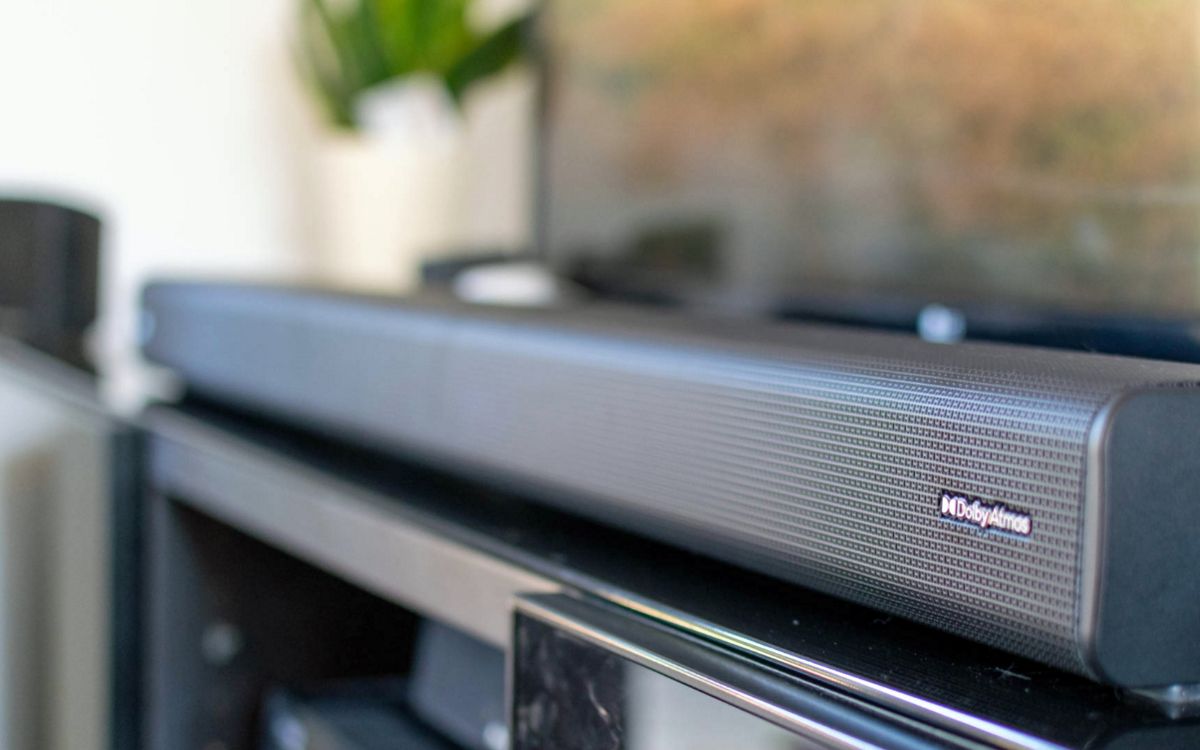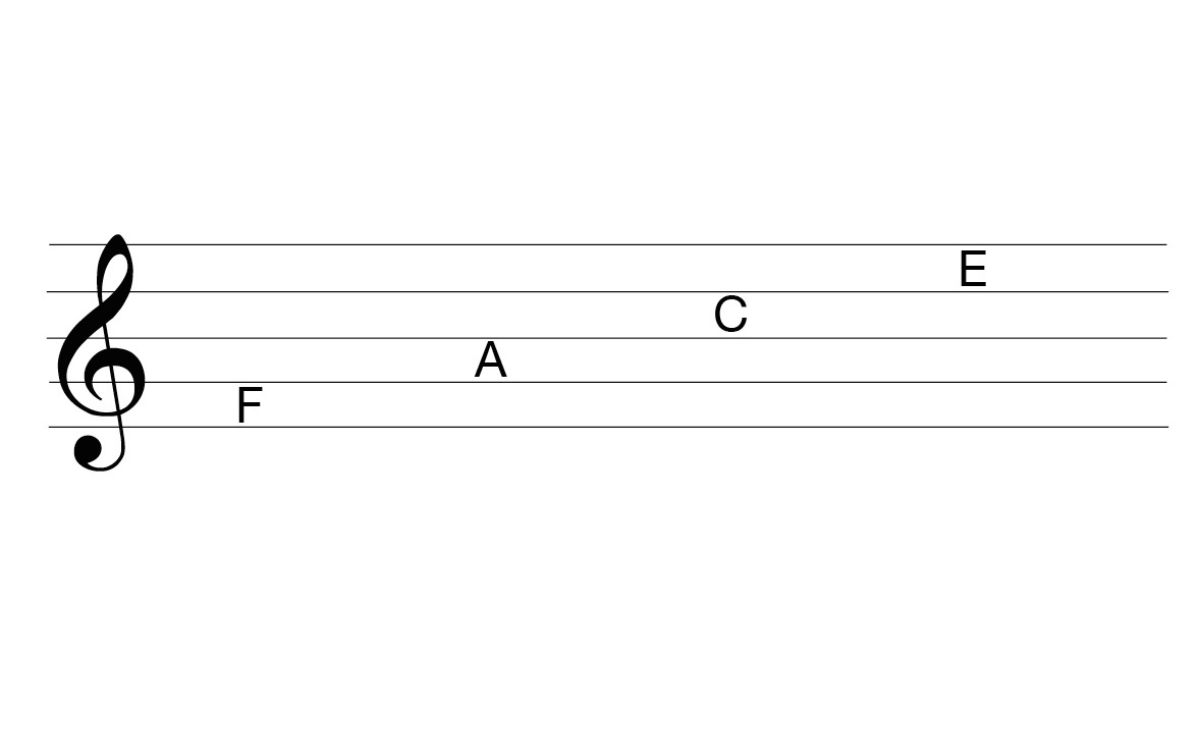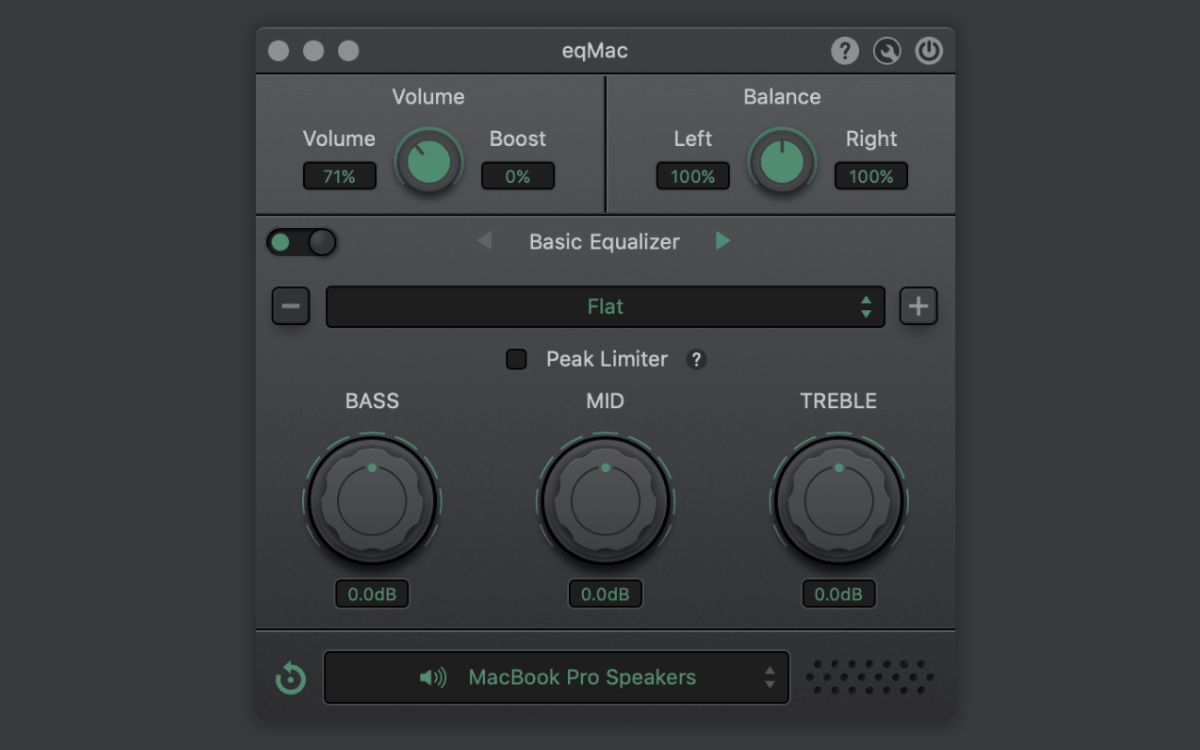Home>Production & Technology>Treble>What Is Treble


Treble
What Is Treble
Modified: February 15, 2024
Discover what treble is and how it impacts audio quality. Uncover the role of treble in music and sound systems for a richer listening experience.
(Many of the links in this article redirect to a specific reviewed product. Your purchase of these products through affiliate links helps to generate commission for AudioLover.com, at no extra cost. Learn more)
Table of Contents
Introduction
Welcome to the world of Treble! In this article, we will explore the ins and outs of Treble, a concept that holds great significance in the realms of audio and music. Whether you’re a music enthusiast, an audio professional, or simply curious about the technical aspects of sound reproduction, Treble is a fundamental element that you definitely want to understand.
But what exactly is Treble? In simple terms, Treble refers to the high-frequency sounds in audio. When you listen to a piece of music or any audio content, be it through headphones, speakers, or even live performances, you can distinguish various elements of sound. Treble represents the upper range of frequencies, including notes like cymbals, flutes, and vocal harmonies. It adds sparkle, clarity, and definition to the overall audio experience.
So why is Treble so important? Well, without it, the audio would sound dull and lacking detail. Imagine listening to your favorite song without the subtle shimmer of the hi-hat or the crispness of the guitar strings. Treble is what breathes life and character into the music, creating a balanced and immersive sonic experience.
Now that we have a general understanding of what Treble is, let’s delve deeper into its history. Understanding the origins and evolution of Treble will provide us with valuable insights into its significance and application in modern audio systems.
Definition of Treble
Treble is a term used to describe the high-frequency range of sound in audio. It represents the upper portion of the audible frequency spectrum, typically ranging from around 2,000 Hz to 20,000 Hz. In simple terms, Treble refers to the crisp, clear, and bright tones that we hear in music and other audio content.
When you listen to a piece of music, the Treble frequencies are responsible for the sharpness and clarity of instruments like cymbals, tambourines, and flutes. They also play a crucial role in the reproduction of vocal harmonies, adding sweetness and articulation to the singers’ voices. Without Treble, the audio would sound dull, lacking detail, and lacking high-end presence.
It’s important to note that Treble is just one part of the frequency spectrum. The other two main components are Midrange and Bass. Midrange covers the frequencies between Treble and Bass, while Bass represents the low-frequency range.
Audio engineers and musicians often refer to Treble using different terms. Some common synonyms include “highs,” “high-frequency content,” or “upper harmonics.” Regardless of the terminology used, the primary focus remains on those sparkling, higher-pitched sounds that give audio its clarity and definition.
Understanding the concept of Treble is crucial for various audio-related activities. Whether you are mixing music, designing sound systems, or even just enjoying your favorite songs, having a solid grasp of Treble will enable you to appreciate and manipulate the audio to achieve the desired sonic characteristics.
Next, let’s explore the fascinating history of Treble and how it has evolved over time.
History of Treble
The history of Treble can be traced back to the early developments in audio technology and the quest for achieving better sound reproduction. As early as the 1800s, inventors and scientists began experimenting with ways to capture and reproduce sound, leading to the birth of the phonograph and later, the invention of the microphone and loudspeaker.
In the early days of audio, the focus was primarily on reproducing the fundamental frequencies of musical instruments and voices accurately. However, as technology advanced and audio systems became more sophisticated, the need for capturing and reproducing the higher frequencies became apparent.
The concept of Treble, as we understand it today, started to gain prominence in the mid-20th century with the advent of high-fidelity audio systems. These systems aimed to provide a more faithful and realistic reproduction of recorded sound. The improvement in audio amplification, speaker design, and recording techniques allowed for better articulation and clarity in the higher frequency range.
The development of Treble controls in audio equipment further enhanced the ability to adjust and tailor the balance between high and low frequencies. These controls allow users to adjust the emphasis on Treble to suit their listening preferences or compensate for the characteristics of different recordings or playback environments.
In the later years, with the rise of digital audio and the widespread use of equalization tools, the manipulation of Treble became even more precise. Digital equalizers provide users with much finer control over specific frequency bands, allowing for more accurate adjustments of the Treble range.
Today, we find Treble playing a crucial role in various audio applications, from music production and live sound engineering to home theater systems and portable audio devices.
With the evolution of audio technology, the history of Treble continues to unfold, as scientists and engineers strive to push the boundaries of sound reproduction and deliver immersive audio experiences.
Now that we have explored the history of Treble, let’s move on to understand its purpose and why it is essential in audio systems.
Purpose of Treble
The purpose of Treble in audio systems is to add clarity, definition, and brilliance to the sound. It plays a crucial role in creating a balanced and immersive listening experience, allowing us to perceive the intricacies and nuances of music and other audio content.
One of the primary purposes of Treble is to enhance the high-frequency harmonics and overtones present in musical instruments and vocals. By reproducing these upper frequencies with accuracy, Treble helps to maintain the natural timbre and character of the sounds. This adds a sense of realism and depth to the audio, making it more engaging and enjoyable to listen to.
Furthermore, Treble contributes to the spatial perception of sound. It assists in the localization of instruments and voices within the stereo field, allowing us to perceive their positions accurately. This spatial dimension adds a sense of depth and immersiveness to the audio, making it feel more like a live performance.
Another vital purpose of Treble is to improve the intelligibility of vocals. High-frequency information in speech and singing contains consonant sounds and other essential details that can be easily lost if the Treble range is not adequately reproduced. By emphasizing the Treble frequencies, vocals become more articulate and intelligible, especially in crowded or noisy listening environments.
Moreover, Treble helps in delineating individual instruments and elements within a musical arrangement. By providing clarity and separation between different sounds, Treble allows us to perceive the subtle nuances of each instrument and appreciate their unique contributions to the overall composition.
It’s essential to note that while Treble enhances the audio experience, it needs to be balanced with the other frequency ranges, such as Midrange and Bass. Harmonious blending of these three components creates a well-rounded and immersive sound reproduction.
In summary, the purpose of Treble is to provide clarity, definition, and brilliance to the audio, allowing us to perceive the subtleties and complexities of music and other audio content. By accurately reproducing the high-frequency range, Treble adds a sense of realism, depth, and spatiality to the sound, enhancing the overall listening experience.
Next, let’s delve into the components of Treble and understand how it is achieved in audio systems.
Components of Treble
The reproduction of Treble in audio systems involves a combination of various components working together to capture, amplify, and reproduce the high-frequency range. These components play a crucial role in shaping the characteristics of Treble and ensuring its faithful representation in the audio playback. Here are some key components of Treble:
1. Tweeters
Tweeters are specialized speakers designed to handle and reproduce high-frequency sounds accurately. They are responsible for producing the Treble frequencies with clarity and precision. Typically, tweeters feature small and lightweight diaphragms that can vibrate rapidly to reproduce the fast-changing high-frequency audio signals.
2. Crossover Networks
Crossover networks are electronic circuits that divide the audio signal into different frequency ranges and direct them to the appropriate speaker components. In multi-way speaker systems, crossover networks ensure that Treble frequencies are sent to the tweeters, while Midrange and Bass frequencies are directed to the respective drivers. By separating the frequencies, crossovers enable each speaker to focus on reproducing their specific frequency range accurately.
3. Amplifiers
Amplifiers are responsible for boosting the audio signal to drive the speakers. In the case of Treble, specialized amplifiers are often used to ensure that the high-frequency signals are amplified without distortion. These amplifiers are designed to handle the rapid changes and intricacies of Treble frequencies, providing clean and accurate amplification.
4. Equalizers
Equalizers are audio processors that allow users to adjust the frequency response of the audio signal. They feature various bands that can be adjusted to boost or attenuate specific frequencies. When it comes to Treble, equalizers come into play to fine-tune and shape the high-frequency range according to personal preferences or to compensate for the acoustic characteristics of the listening environment.
5. Acoustic Treatments
Acoustic treatments, such as sound-absorbing panels, diffusers, and bass traps, can also indirectly impact the perception and reproduction of Treble. By reducing unwanted reflections, echoes, and resonances in the room, acoustic treatments help create a more balanced sound environment. This enhances the accuracy and clarity of Treble by minimizing the interference and coloration caused by room acoustics.
By integrating these components in audio systems, engineers and enthusiasts can achieve accurate and faithful reproduction of Treble frequencies. The careful selection and design of these components contribute to the overall sonic performance and ensure the proper representation of high-frequency content in music and other audio recordings.
Now that we have explored the components of Treble, let’s move on to the benefits that Treble brings to our audio experience.
Benefits of Treble
Treble, as a vital component of audio, brings several benefits to our overall listening experience. Its inclusion and accurate reproduction offer unique advantages that enhance our perception and enjoyment of music and other audio content. Here are some key benefits of Treble:
1. Clarity and Detail
Treble adds clarity and detail to audio by reproducing the high-frequency sounds with accuracy. It allows us to hear the subtle nuances and intricacies in music, such as the delicate notes of a flute or the shimmering of cymbals. The clarity provided by Treble helps to distinguish individual instruments and voices in a mix, enhancing the overall listening experience.
2. Definition and Articulation
Treble provides definition and articulation to sounds by emphasizing the higher harmonics and overtones. It helps to separate different elements within a mix, making it easier for our ears to perceive individual instruments and their unique contributions to the overall composition. Treble brings a sense of articulation and precision, allowing us to appreciate the subtle nuances and dynamic range of music.
3. Spatial Perception
Treble plays a crucial role in the spatial perception of sound. By accurately reproducing high-frequency content, it helps us localize instruments and voices within the stereo field. This spatial dimension adds depth and immersion to the audio experience, making it feel more three-dimensional and lifelike. Treble enables us to sense the positioning and movement of sounds, creating a more realistic and engaging listening experience.
4. Intelligibility of Vocals
One significant benefit of Treble is its role in enhancing the intelligibility of vocals. High-frequency information in speech and singing contains consonant sounds and other vital details that contribute to clear communication and understanding. By emphasizing the Treble frequencies, vocals become more articulate and intelligible, particularly in environments where background noise or other audio elements might interfere with clarity.
5. Emotional Impact
Treble also adds an emotional impact to music. The brightness and sparkle of high-frequency sounds can evoke feelings of excitement, joy, or even melancholy, depending on the nature of the audio content. Treble accents certain elements of music, allowing for a heightened emotional connection between the listener and the artist’s expression.
6. Balance and Harmonization
Treble, like Midrange and Bass, contributes to achieving a balanced sound. By properly reproducing the high-frequency range, Treble helps to maintain the equilibrium between different frequency components. This balanced sound ensures that no one frequency range overpowers the others, resulting in an enjoyable and well-rounded audio experience.
With these benefits in mind, it’s clear that Treble plays a crucial role in enhancing the quality and impact of our audio experience. From adding clarity and detail to spatial perception and emotional impact, Treble enriches the way we perceive and connect with music and other audio content.
However, it’s important to acknowledge that Treble is not without its challenges and criticisms. Let’s explore some of these limitations in the next section.
Challenges and Criticisms of Treble
While Treble brings numerous benefits to audio reproduction, it also faces some challenges and criticisms. These factors highlight the importance of finding the right balance and addressing potential drawbacks. Here are some of the challenges and criticisms associated with Treble:
1. Fatigue and Harshness
One common criticism of Treble is that excessive emphasis or poor quality reproduction can lead to listener fatigue. High-frequency sounds that are too harsh or bright can be tiring to the ears, especially during prolonged listening sessions. Achieving a balanced Treble is crucial to prevent any harshness or discomfort in the audio.
2. Imbalanced Sound
If the Treble frequencies are overemphasized or lacking in a sound system, it can result in an imbalanced audio experience. An excessive Treble can overpower the Midrange and Bass, leading to a thin or harsh sound. On the other hand, insufficient Treble can make the audio sound dull and lacking in clarity. Striking the right balance among the frequency components is crucial for a natural and pleasing sound reproduction.
3. Recording and Mixing Challenges
Recording and mixing audio with a proper representation of Treble can be challenging. Capturing and reproducing the intricate details and nuances of high-frequency sounds require precise microphone placement, proper room acoustics, and skilled engineering techniques. Without careful attention, the Treble range can get masked or distorted, affecting the overall audio quality.
4. Room Acoustics
Room acoustics can significantly impact the perception of Treble. Reflections, echoes, and resonances in a room can color and distort the high-frequency content, leading to an inaccurate representation of the original audio. Addressing room acoustics through the use of acoustic treatments or proper speaker placement is crucial to minimize the negative effects on Treble reproduction.
5. Listener Preferences
Preferences regarding the balance and emphasis on Treble vary among individuals. Some listeners enjoy a bright and detailed sound with a strong emphasis on Treble, while others prefer a more neutral or warmer sound with subtle Treble accents. It is essential for audio engineers and manufacturers to consider these varying preferences when designing audio systems and offering equalization options.
Addressing these challenges and criticisms is vital to ensure a pleasing and accurate representation of Treble in audio systems. By striking a balance, considering room acoustics, and taking into account individual preferences, audio enthusiasts can create and enjoy a sonic experience that best suits their needs and preferences.
Now, let’s conclude our exploration of Treble.
Conclusion
Treble plays a critical role in the world of audio, adding clarity, definition, and brilliance to the sounds we hear. Through this article, we have explored the definition of Treble, its history, purpose, components, benefits, and even the challenges and criticisms it faces.
We have learned that Treble represents the high-frequency range of sound, crucial for reproducing the crispness, articulation, and spatial perception of music and other audio content. Treble contributes to the overall balance and harmonization of sound, enhances the intelligibility of vocals, and adds emotional impact to our listening experiences.
While Treble brings a multitude of benefits, it has its challenges and criticisms. Issues such as listener fatigue, imbalanced sound, recording difficulties, room acoustics, and varying listener preferences need to be considered to achieve the best representation of Treble in audio reproduction.
It is crucial for audio enthusiasts, engineers, and manufacturers to strike a balance, refine their techniques, and consider individual preferences to create sound systems that accurately capture and reproduce the high-frequency range. By doing so, they can deliver immersive and enjoyable audio experiences that are faithful to the intentions of the artists.
As technology continues to advance and our understanding of audio deepens, Treble will undoubtedly continue to evolve. Innovations in speaker design, amplification, equalization, and recording techniques will shape the future of Treble, allowing for even more precise and immersive sound reproduction.
So, the next time you listen to your favorite song or engage in any audio content, take a moment to appreciate the importance of Treble. It adds the sparkle to the cymbals, the clarity to the vocals, and the definition to the instruments, making the audio experience come alive.











